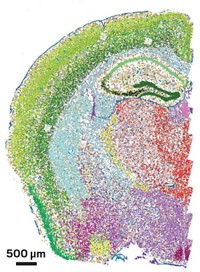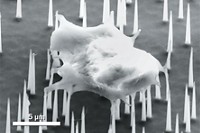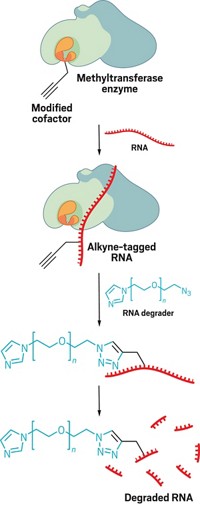Advertisement
Grab your lab coat. Let's get started
Welcome!
Welcome!
Create an account below to get 6 C&EN articles per month, receive newsletters and more - all free.
It seems this is your first time logging in online. Please enter the following information to continue.
As an ACS member you automatically get access to this site. All we need is few more details to create your reading experience.
Not you? Sign in with a different account.
Not you? Sign in with a different account.
ERROR 1
ERROR 1
ERROR 2
ERROR 2
ERROR 2
ERROR 2
ERROR 2
Password and Confirm password must match.
If you have an ACS member number, please enter it here so we can link this account to your membership. (optional)
ERROR 2
ACS values your privacy. By submitting your information, you are gaining access to C&EN and subscribing to our weekly newsletter. We use the information you provide to make your reading experience better, and we will never sell your data to third party members.
Biological Chemistry
Moving Vans For Cellular Proteins
Chemical Biology: Hybrid small molecules tweak cell signals by repositioning proteins
by Stu Borman
August 25, 2013
| A version of this story appeared in
Volume 91, Issue 34

The location of proteins in cells can greatly affect their biological functions. For instance, important cell signals can be turned on and off by the movement of proteins from the cytoplasm to the cell membrane. A new technique for moving proteins around in cells could lead to the next generation of cell-signaling-based drugs.
In the past, scientists developed a process, chemically inducible dimerization (CID), that could maneuver proteins that it brought into cells. But it couldn’t manipulate proteins already there. The technique also takes some doing, typically requiring engineering cells to express two fusion proteins and then introducing a small molecule that joins the proteins. CID positioning is usually irreversible, its protein repertoire is limited and not easily expanded, and it can generally move only one protein at a time.
In the new technique, small molecules called self-localizing ligands (SLLs) are added to cells. SLLs are hybrid small molecules that each include a selective protein-binding ligand and a group that binds to a cell site, such as the cell membrane, nucleus, or cytoskeleton. So one part of the SLL can grab a specific protein, and the other part tugs it to a particular location.
The SLL technique is reversible, and is potentially simpler and more easily extended to a wider variety of proteins than CID. The technique is also capable of relocating multiple proteins simultaneously. Shinya Tsukiji of Nagaoka University of Technology, Itaru Hamachi of Kyoto University, and coworkers developed it (J. Am. Chem. Soc. 2013, DOI: 10.1021/ja4046907).
SLLs can be used to study cell signaling and “may be key to developing a new protein-relocation-based drug platform,” Tsukiji says.
In the study, the Japanese team relocated synthetic and endogenous proteins to different cell structures, activated signaling pathways by relocating proteins, demonstrated reversibility by using one SLL to move a protein and another to release it, and relocated multiple proteins simultaneously. The SLLs were not toxic.
The technique “marks considerable progress in chemical control of subcellular localization of cellular proteins,” says Christian Ottmann of Eindhoven University of Technology, in the Netherlands, who has used CID. SLL systems are simpler than CID, he says, and the modular character of SLLs in principle allows them to be extended to different proteins and sites for which appropriate ligands and localization motifs are available.
The SLL technique is “an important breakthrough in this field that reduces the need for genetic engineering,” comments Blake R. Peterson of the University of Kansas, Lawrence, who studies anchoring of proteins to membranes.
CID specialist Takanari Inoue of Johns Hopkins University School of Medicine notes some limitations, however. The number of SSL-movable proteins and transfer sites are still restricted because moving-van molecules are not available for all targets, he says. And SLLs work more slowly than CID—in minutes versus seconds. But SLLs have many advantages, he adds, and “great potential to probe complex cell signaling.”
Another CID expert, Carsten Schultz of the European Molecular Biology Laboratory, Heidelberg, Germany, says SLLs might be advantageous for some studies. But identifying appropriate protein ligands, chemically attaching them to site-targeting groups, and ensuring nontoxicity “is an enormous effort that will not likely be used for the average problem in cell biology,” he says. “Of course, I could be wrong.”





Join the conversation
Contact the reporter
Submit a Letter to the Editor for publication
Engage with us on Twitter